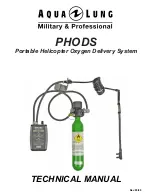
Laney
OPERATING INSTRUCTIONS
TUBE AMPLIFIER SURVIVAL TIPS
"
Take care when moving the amplifier. Tubes are fragile glass components, they can easily be damaged if thrown in and out of transit vans
etc.
"
Make sure the impedance of your cabinets matches the setting on your amplifier. Improper impedance matching will result in reduced
output power output and compromised sound at best and amplifier failure/premature tube failure at worst.
"
Allow the amplifier to warm up to room temperature before switching it on, The sudden thermal shock generated can crack the cold
glass tube housing plus any moisture is bad news around high voltage electronics.
"
Allow the amplifier to cool down after playing before moving. Hot tubes are more suseptable to damage than cool ones.
Use good quality loudspeaker leads, cheap leads are often not up to the job of handling the large requirements for loudspeakers and can
often short out. Tube amps don't like running into a short circuit.
A tubes life expectancy is based upon a number of factors which include operating temperature, how hard and how often it is played,
vibration due to travel etc. Tubes should be changed in your amplifier If you notice any change in your amplifiers performance etc. They
need not be changed at any regular interval.
Typical problems with preamp tubes can be a crackley noise, hiss, hum and microphony. The preamp tubes can safely be changed with no
action required if they fail or reduce in performance.
Typical output tube problems can be blown HT fuse, sound lacking in punch, sound lacks extreme highs or lows and low level hum. The
Output tubes can be replaced singularly
if you replace them with the exact same type AND grade as factory fitted
otherwise they
should be replaced as a set. If the same type and grade are used then no rebiasing of the amplifier is required.
See the diagram at the bottom
left hand corner to see how to check the tube grade fitted. If you wish to use a different grade of tube then they should only ever be changed
by a qualified service agent due to the grid bias voltage needing adjustment. Do not attempt to rebias your tube amplifier yourself, there are
potentially dangerous voltages inside.
Exact replacement preamp tubes and matched sets of output tubes are available from Laney via your dealer.
To change a tube, switch off the unit and unplug from the mains supply. Wait for the tubes to cool down. Remove the protective grille held in
place with four screws. You should now be able to access the chassis where the tubes are mounted. Preamp tubes are protected with a
screen can, to remove; gently twist the screen can anti clockwise and then pull up. The tube can then be gently pulled out. Take care when
pushing the new tube in to make sure the pins are all aligned properly Output tubes have a spring retainer which must be pushed downwards
before the tube will come out.
Tube amplifiers generally sound much warmer/sweeter than solid state transistor amplifiers but they also need a little more respect due to
the fragile glass tubes themselves. The TT uses top quality tubes, six ECC83 preamp tubes, and a matched set of four EL34B-STR output
tubes (two EL34B-STR’s on the TT50H) which should give you years of trouble free service, however like all tube amps; it is important to
treat it with a certain amount of respect.
Page 18/24
H
/T
T1
H
TT
50
00







































